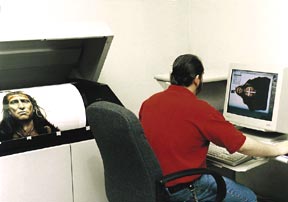 You’ve seen it. You’ve heard about it. You may even be able to pronounce it (“zhee-clay”), but exactly what is it? Simply put, giclée is a label now used to denote archival quality fine-art prints produced using digital printing technology.
You’ve seen it. You’ve heard about it. You may even be able to pronounce it (“zhee-clay”), but exactly what is it? Simply put, giclée is a label now used to denote archival quality fine-art prints produced using digital printing technology.
Essentially any painting or drawing you create can be reproduced on canvas, watercolor paper, or a variety of other substrates. The likeness of the reproduction to the original work is so close that many people can’t tell the difference. This process enables the art lover to own a near-original without paying “original” prices.
Of course, as an artist, you benefit as well, since you create digitally produced limited edition reproductions one at a time, as you’re able to sell them. You risk no huge press runs or investments. The business is simply “pay as you sell.” In addition, for the emerging digital art community, the giclée printing process allows the first original piece to be printed on any desired substrate. While the jury is still out on the prices these “originals” will garner, you can be certain an otherwise starving digital artist will make a tidy sum.
Back to the Process
While the term “giclée” is actually patented by Scitex America (the manufacturer of the Iris family of inkjet printers), the French word literally means “to spray.” This simple definition correlates to the specifics of the printing process. Essentially, four nozzles–each spraying a separate color of the CMYK (cyan, magenta, yellow, black) family–are responsible for laying down ink on paper. Each of these nozzles have received specific digital information which allows them to disperse their microscopic droplets of ink in just the right hue, shade, and position on the paper or canvas.
(WARNING: this oversimplified definition may lead you to believe all giclée prints are the same, when–in fact–there are many factors in the giclée process that lead to variances in a giclée print. We will address these later in the article.)
Let’s go back to the digital information needed to guide the ink nozzles. This guidance is achieved by scanning original artwork or a transparency of the original to a computer file. Once the image is “captured” digitally, it can be altered in many ways via the computer–including doing any additional fine tuning of color or re-touching of select portions of the artwork. (Of course, most digital artists already have digital artwork. In which case, only a readable CMYK file and color reference need to be supplied.)
Once the artwork is in a digital format that the spray nozzles can receive, the nozzles can recreate the color information on any variety of substrates–including photographic papers, handmade papers, watercolor papers, canvas–even leather or silk! No half-tones are used. No film is needed. There are no large, expensive press runs–just beautiful “continuous tone” prints made one at a time. Therein lies the true beauty of giclée prints. Artists can market their prints one at a time on an as-sold basis.
The digital image is burned to a CD and kept by the production house. Thus, another giclée print is only a phone call away. The inventory and forecasting nightmare is dispelled. Naturally, production times do vary, but a reputable company can usually produce a giclée within five to ten days.
Doing Your Homework
This brings me to another consideration–finding a reputable giclée production team. Like anything else, the adage “You get what you pay for” holds true–especially in the giclée market. As I mentioned before, the integrity, longevity, and marketability of your giclée print is dependent on many factors. Although patented, the giclée term is widely used and can label anything coming out of an inkjet printer–including pieces produced from your neighbor’s desktop printer!
Garbage in, Garbage out
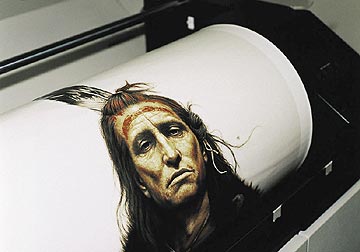 The first phase of capturing digital images is just as important as the final output. Another cliché becomes important: “Garbage in, garbage out.” Ideally, seek a supplier that can scan your original artwork on a top-of-the-line scanner that uses a CMYK format. Note: Most scanners read information in RGB (like your television or computer monitor) and then have to convert the image to CMYK through software. There is a major difference in quality between your neighbor’s flatbed scanner and a high-end Crosfield® drum scanner.
The first phase of capturing digital images is just as important as the final output. Another cliché becomes important: “Garbage in, garbage out.” Ideally, seek a supplier that can scan your original artwork on a top-of-the-line scanner that uses a CMYK format. Note: Most scanners read information in RGB (like your television or computer monitor) and then have to convert the image to CMYK through software. There is a major difference in quality between your neighbor’s flatbed scanner and a high-end Crosfield® drum scanner.
If you’re providing your supplier with a transparency instead of your original artwork, talk with him/her about a reputable photographer, film grains, and how different size formats will affect your final print. Likewise, if you’re supplying a digital file to your giclée source, talk to the technician about resolution, dpi, and RGB vs. CMYK formats for the best possible results.
Getting it Right
The next stage, color proofing and correction, relies heavily on the experience of your giclée technician, his/her software, and your communication. Be prepared with your original artwork, if possible, and share any color sensitivities and desires you have. Unfortunately, not all paints, dyes, and art mediums are exactly reproducible. Fluorescent, for instance, will not reproduce well. Interestingly enough, titanium white contains fluorescent, so always let your operator know what you’ve used to attain your rainbow of colors. Armed with knowledge, s/he will be better able to achieve your color goals.
Most giclée pricing reflects at least two or three color adjustment proofs (including time and materials). Knowing how to achieve and maintain the color of an original is a skill crafted over time, but even the most skilled technician is only as good as the materials, inks, scanners and output devices s/he is using.
Putting it to the Test
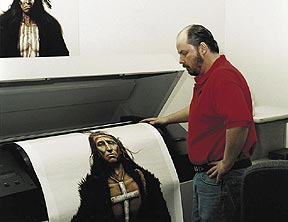 The final output device is, of course, the last crucial element in achieving a piece that best reflects your original. Many different machines by many different manufacturers exist in the marketplace today. Some are sheet fed, while some wrap your chosen substrate around a drum for printing. In the case of nozzles, some structures produce a finer spray with microscopic droplets, and other systems produce a cruder dot that’s readily visible to the human eye. (Remember your neighbor’s inkjet printer?) Some device manufacturers also develop better long lasting inks and pigment dyes than others. In fact the longevity of the giclée inks (or dyes), while far better than those used in lithography, varies from thirty to seventy years and beyond. Unfortunately, some inks sacrifice color range in order to achieve longevity–and vice versa. Your giclée technician should be knowledgeable about the inks, substrates, and additional V coatings s/he uses and how they work in correlation to each other.
The final output device is, of course, the last crucial element in achieving a piece that best reflects your original. Many different machines by many different manufacturers exist in the marketplace today. Some are sheet fed, while some wrap your chosen substrate around a drum for printing. In the case of nozzles, some structures produce a finer spray with microscopic droplets, and other systems produce a cruder dot that’s readily visible to the human eye. (Remember your neighbor’s inkjet printer?) Some device manufacturers also develop better long lasting inks and pigment dyes than others. In fact the longevity of the giclée inks (or dyes), while far better than those used in lithography, varies from thirty to seventy years and beyond. Unfortunately, some inks sacrifice color range in order to achieve longevity–and vice versa. Your giclée technician should be knowledgeable about the inks, substrates, and additional V coatings s/he uses and how they work in correlation to each other.
Making it work
As you can see, the giclée process is much more than just digital reproduction. It’s a marriage of great art, skilled craftsmen, and superior materials and devices. Those of us who’ve been reproducing fine art through the years are excited to use our skill and color knowledge to enable artists of all levels to achieve their full potential in the marketplace. Giclée is not an elusive process but an achievable team creation by both the printmaker and the artist. As technology improves, so will the quality of reproductions. In the meantime, lend your artwork to the best possible reproduction processes available. How can you expect others to value your work if you don’t?
by Heather Clifford

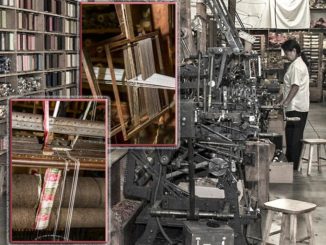
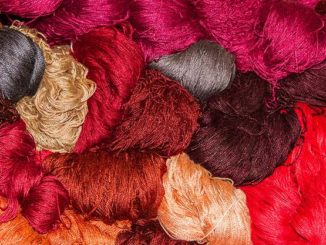

Leave a Reply